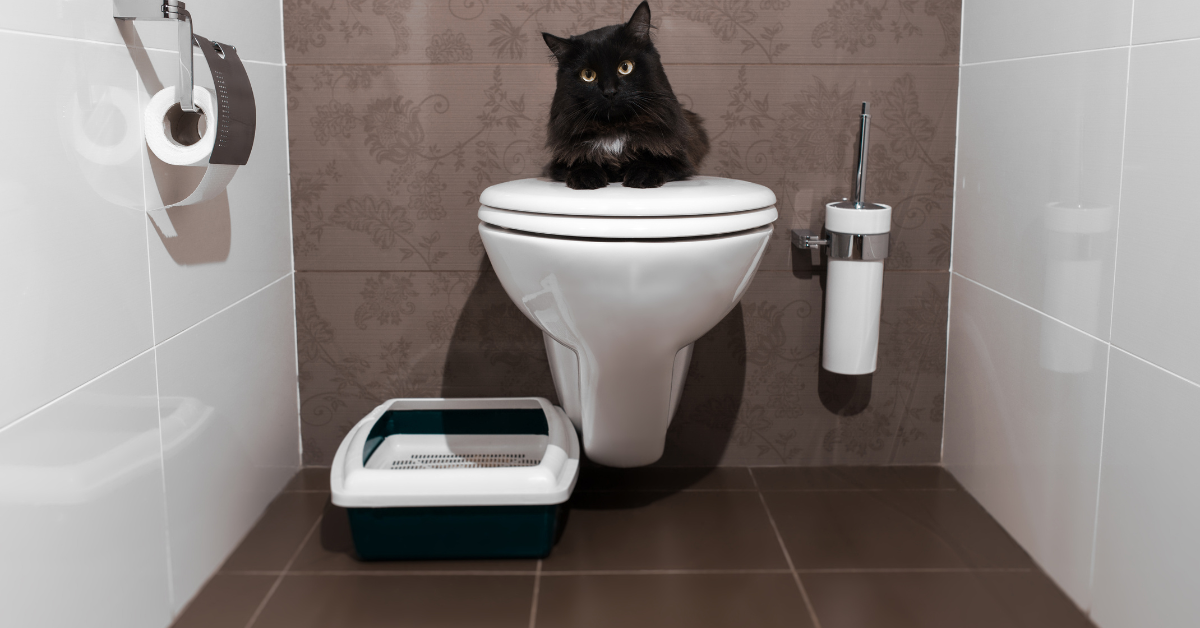Reasons Flushing Cat Poop Down Your Toilet May Cause Problems - Recommendations for Safe Disposal
Reasons Flushing Cat Poop Down Your Toilet May Cause Problems - Recommendations for Safe Disposal
Blog Article
Just how do you really feel in regards to Can You Flush Cat Poop Down The Toilet??

Introduction
As cat proprietors, it's necessary to bear in mind exactly how we deal with our feline friends' waste. While it might appear practical to purge cat poop down the commode, this practice can have damaging consequences for both the atmosphere and human wellness.
Environmental Impact
Flushing pet cat poop presents hazardous microorganisms and bloodsuckers right into the water supply, presenting a substantial threat to marine ecosystems. These pollutants can negatively affect marine life and concession water high quality.
Health Risks
In addition to ecological issues, purging feline waste can also position health and wellness threats to human beings. Pet cat feces might include Toxoplasma gondii, a bloodsucker that can cause toxoplasmosis-- a potentially severe illness, especially for expecting females and individuals with damaged immune systems.
Alternatives to Flushing
Fortunately, there are safer and much more accountable ways to dispose of pet cat poop. Think about the adhering to choices:
1. Scoop and Dispose in Trash
One of the most common approach of getting rid of cat poop is to scoop it right into a biodegradable bag and toss it in the trash. Make sure to make use of a devoted litter scoop and take care of the waste promptly.
2. Use Biodegradable Litter
Select eco-friendly pet cat clutter made from products such as corn or wheat. These litters are environmentally friendly and can be safely gotten rid of in the trash.
3. Bury in the Yard
If you have a yard, consider burying cat waste in a marked location far from vegetable gardens and water sources. Make certain to dig deep adequate to avoid contamination of groundwater.
4. Install a Pet Waste Disposal System
Invest in a pet dog garbage disposal system particularly designed for feline waste. These systems utilize enzymes to break down the waste, reducing smell and environmental influence.
Conclusion
Accountable pet dog ownership extends beyond offering food and shelter-- it also entails appropriate waste administration. By avoiding flushing cat poop down the commode and selecting alternate disposal methods, we can decrease our ecological footprint and secure human wellness.
Why Can’t I Flush Cat Poop?
It Spreads a Parasite
Cats are frequently infected with a parasite called toxoplasma gondii. The parasite causes an infection called toxoplasmosis. It is usually harmless to cats. The parasite only uses cat poop as a host for its eggs. Otherwise, the cat’s immune system usually keeps the infection at low enough levels to maintain its own health. But it does not stop the develop of eggs. These eggs are tiny and surprisingly tough. They may survive for a year before they begin to grow. But that’s the problem.
Our wastewater system is not designed to deal with toxoplasmosis eggs. Instead, most eggs will flush from your toilet into sewers and wastewater management plants. After the sewage is treated for many other harmful things in it, it is typically released into local rivers, lakes, or oceans. Here, the toxoplasmosis eggs can find new hosts, including starfish, crabs, otters, and many other wildlife. For many, this is a significant risk to their health. Toxoplasmosis can also end up infecting water sources that are important for agriculture, which means our deer, pigs, and sheep can get infected too.
Is There Risk to Humans?
There can be a risk to human life from flushing cat poop down the toilet. If you do so, the parasites from your cat’s poop can end up in shellfish, game animals, or livestock. If this meat is then served raw or undercooked, the people who eat it can get sick.
In fact, according to the CDC, 40 million people in the United States are infected with toxoplasma gondii. They get it from exposure to infected seafood, or from some kind of cat poop contamination, like drinking from a stream that is contaminated or touching anything that has come into contact with cat poop. That includes just cleaning a cat litter box.
Most people who get infected with these parasites will not develop any symptoms. However, for pregnant women or for those with compromised immune systems, the parasite can cause severe health problems.
How to Handle Cat Poop
The best way to handle cat poop is actually to clean the box more often. The eggs that the parasite sheds will not become active until one to five days after the cat poops. That means that if you clean daily, you’re much less likely to come into direct contact with infectious eggs.
That said, always dispose of cat poop in the garbage and not down the toilet. Wash your hands before and after you clean the litter box, and bring the bag of poop right outside to your garbage bins.
https://trenchlesssolutionsusa.com/why-cant-i-flush-cat-poop/

I came across that blog post about Don’t flush cat feces down the toilet when doing a search on the search engines. Feel free to take the time to promote this page if you appreciated it. Thank you for your time. Come back soon.
Click Here Report this page